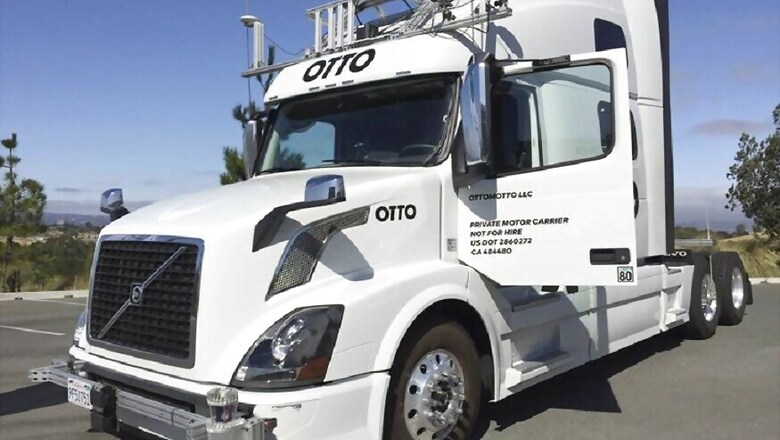
views
Driverless cars can save fuel if they trail each other in large platoons, as they will experience less aerodynamic drag when they drive close together, researchers have found.
But the formation of a vehicle platoon could be time-consuming.
The study by the researchers at Massachusetts Institute of Technology (MIT) that was recently presented at the International Workshop on the Algorithmic Foundations of Robotics suggested that relatively simple, straightforward schedules may be the optimal approach for saving fuel and minimising delays for autonomous vehicle fleets.
The findings may also apply to conventional long-distance trucking and even ride-sharing services.Also read: BlackBerry to Open Autonomous Driving Research Centre
"Ride-sharing and truck platooning and even flocking birds and formation flight, are similar problems from a systems point of view," said Sertac Karaman, Associate Professor at MIT.
"People who study these systems only look at efficiency metrics like delay and throughput. We look at those same metrics, versus sustainability such as cost, energy, and environmental impact. This line of research might really turn transportation on its head," Karaman added.
The research noted that for truck-driving -- particularly over long distances -- most of a truck's fuel is spent on trying to overcome aerodynamic drag, that is, to push the truck through the surrounding air.Also read: BMW Sets Up Dedicated Centre to Develop Tech For Autonomous Driving
"Scientists have previously calculated that if several trucks were to drive just a few metres apart, one behind the other, those in the middle should experience less drag, saving fuel by as much as 20 percent, while the last truck should save 15 percent - slightly less, due to air currents that drag behind," the study found.
As the number of vehicles are increased in the platoon, more energy can be collectively saved but it may cost in terms of time it takes to form a platoon.
The study found that the simplest policies resulted in the least delays in platoon formation while saving most fuel.
"Timetables set to deploy platoons at regular intervals were more sustainable and efficient than those that deployed at more staggered times," the study mentioned.Also read: Global Autonomous Car Market to Reach 138,089 Units by 2024: Report
















Comments
0 comment